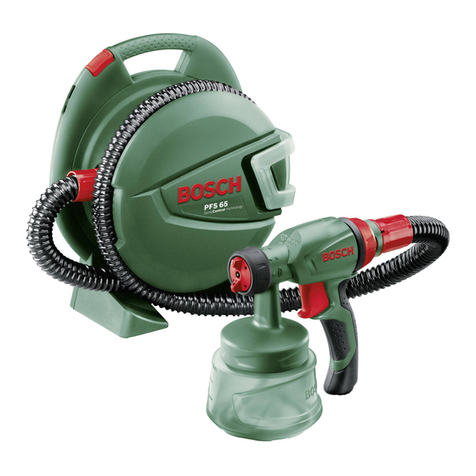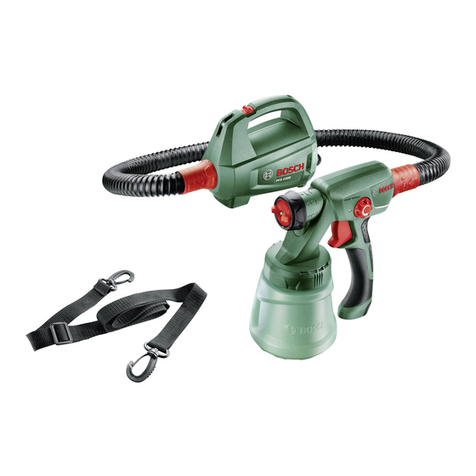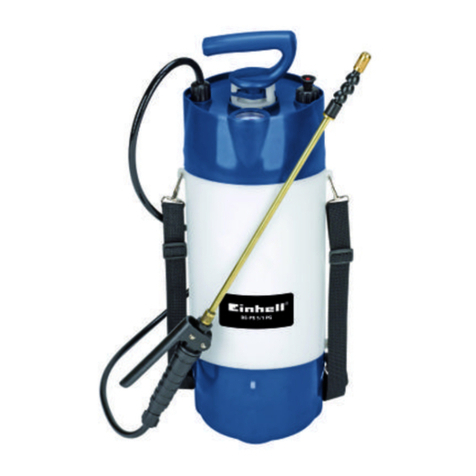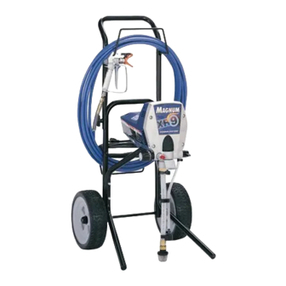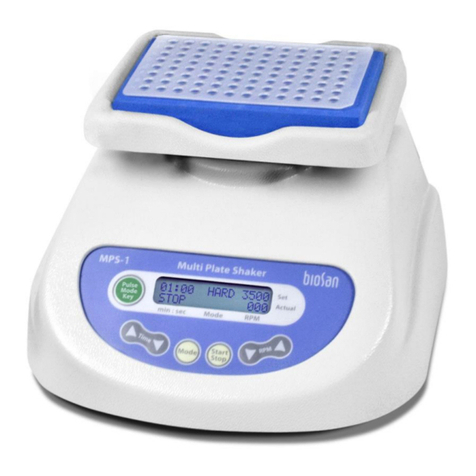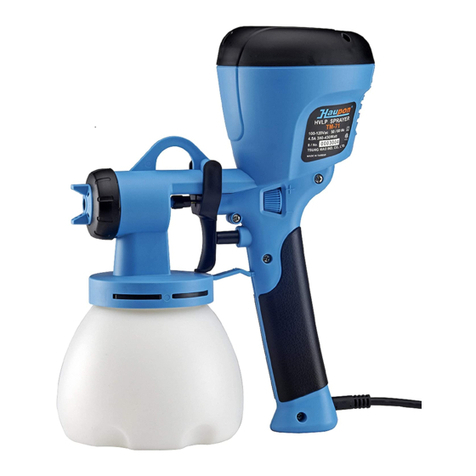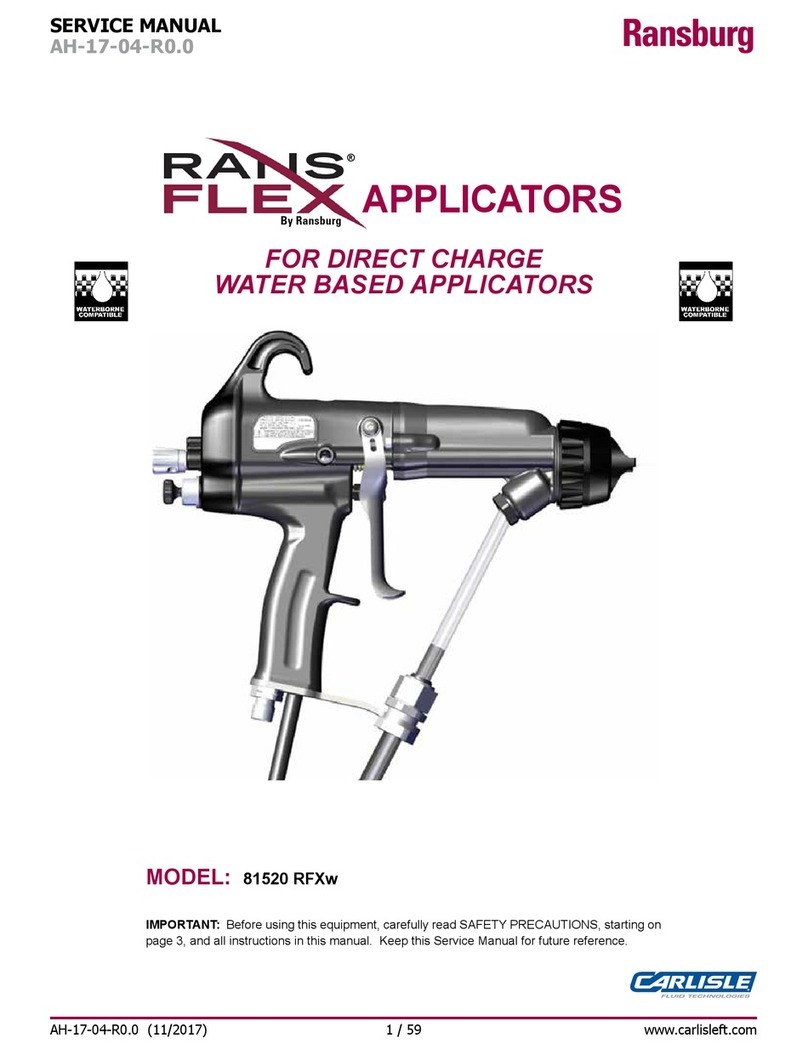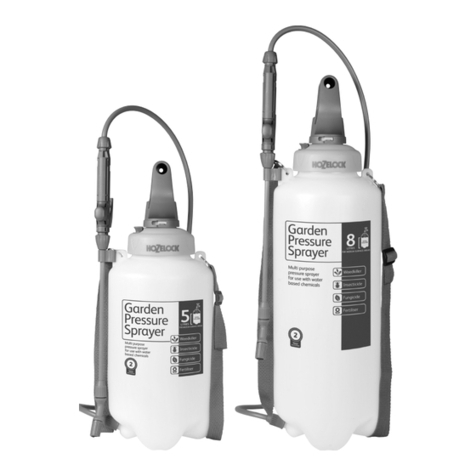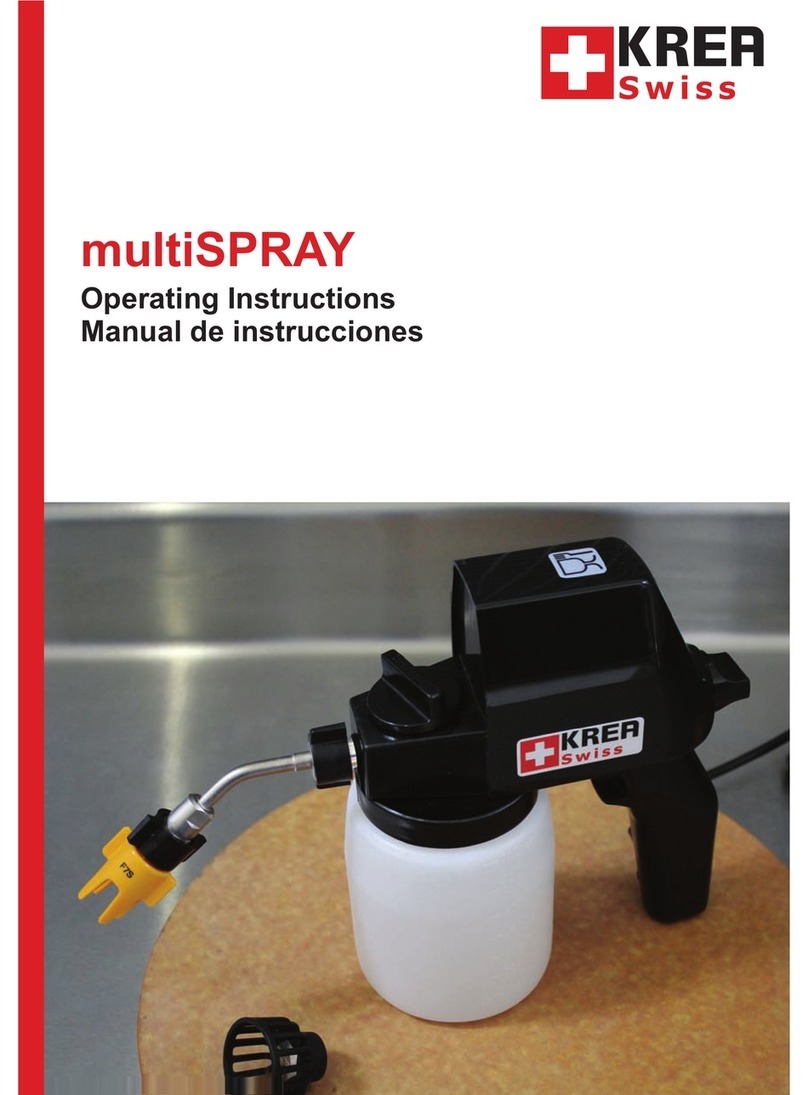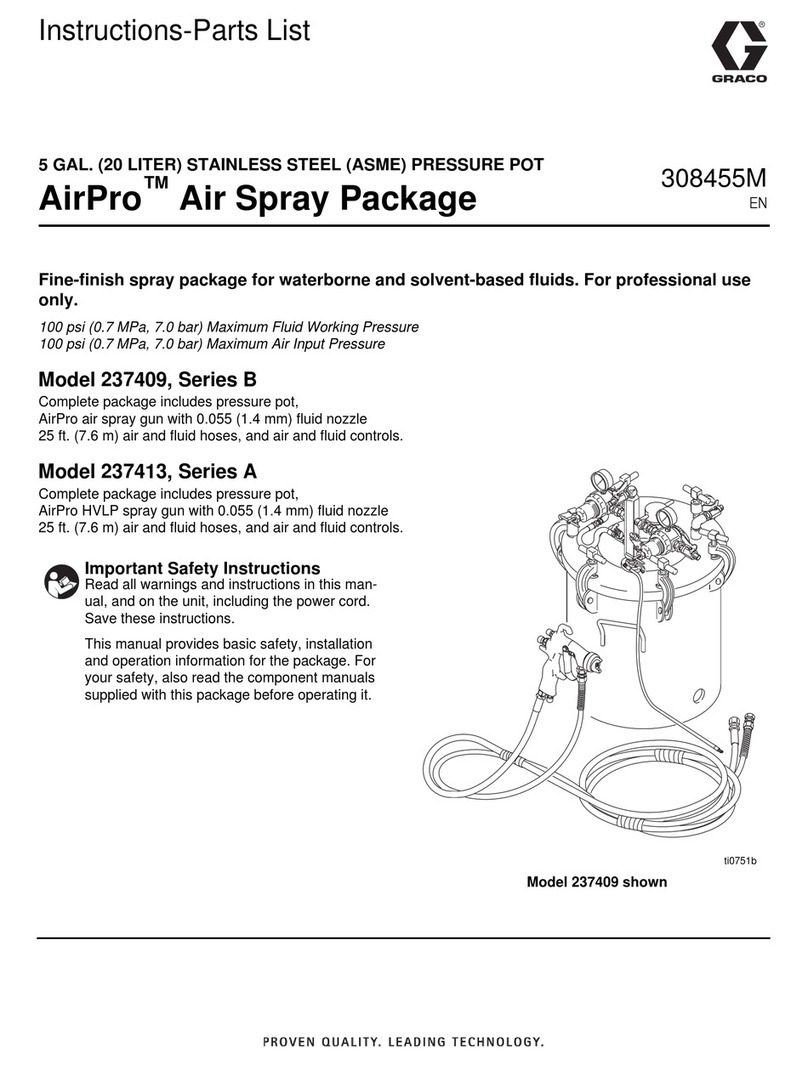Bosch PFS 55 User manual

Robert Bosch GmbH
Power Tools Division
70745 Leinfelden-Echterdingen
www.bosch-pt.com
1 609 929 L54 (2008.02) PS / 302
PFS 55
de Originalbetriebsanleitung
en Original instructions
fr Notice originale
es Manual original
pt Manual original
it Istruzioni originali
nl Oorspronkelijke
gebruiksaanwijzing
da Original brugsanvisning
sv Bruksanvisning i original
no Original driftsinstruks
fi Alkuperäiset ohjeet
el Πρωτότυπο οδηγιών χρήσης
tr Orijinal işletme talimat
pl Instrukcją oryginalną
cs Původním návodem k
používání
sk Pôvodný návod na použitie
hu Eredeti használati utasítás
ru Одлинник руководства по
эксплуатации
uk Оригінальна інструкція з
експлуатації
ro Instrucţiuni de folosire
originale
bg Оригинално ръководство
за експлоатация
sr Originalno uputstvo za rad
sl Izvirna navodila
hr Originalne upute za rad
et Algupärane kasutusjuhend
lv Oriģinālā lietošanas
pamācība
lt Originali instrukcija
OBJ_BUCH-670-001.book Page 1 Monday, February 18, 2008 2:34 PM

3|
1 609 929 L54 | (18.2.08) Bosch Power Tools
3
5
6
4
15
16
10
11
12
22
13 14
1
9
2
OBJ_BUCH-670-001.book Page 3 Monday, February 18, 2008 2:16 PM

1 609 929 L54 | (18.2.08) Bosch Power Tools
4|
A1
B
A2
B1 B2
10
10
10
44
B
C1 C2
5-15cm
OBJ_BUCH-670-001.book Page 4 Monday, February 18, 2008 2:16 PM

18 | English
1 609 929 L54 | (18.2.08) Bosch Power Tools
en
General Power Tool Safety
Warnings
Read all safety warnings, in-
structions including Material
Safety Data Sheets (MSDS), and container la-
bels provided with the paints and solvents.
Failure to follow the warnings and instructions
may result in electric shock, fire and/or serious
injury.
Save all warnings and instructions for future
reference.
The term “power tool” in the warnings refers to
your mains-operated (corded) power tool or
battery-operated (cordless) power tool.
1) Workplace safety
a) Keep work area clean and well lit. Clut-
tered and dark areas invite accidents.
b) Keep children and bystanders away
while operating a power tool. Distrac-
tions can cause you to loose control.
2) Electrical safety
a) Power tool plugs must match the outlet.
Never modify the plug in any way. Do not
use any adapter plugs with earthed
(grounded) power tools. Unmodified
plugs and matching outlets will reduce
risk of electric shock.
b) Avoid body contact with earthed or
grounded surfaces, such as pipes, radia-
tors, ranges and refrigerators. There is
an increased risk of electric shock if your
body is earthed or grounded.
c) Do not expose power tools to rain or wet
conditions. Water entering a power tool
will increase the risk of electric shock.
d) Do not abuse the cord. Never use the
cord for carrying, pulling or unplugging
the power tool. Keep cord away from
heat, oil, sharp edges and moving parts.
Damaged or entangled cords increase the
risk of electric shock.
e) When operating a power tool outdoors,
use an extension cord suitable for out-
door use. Use of a cord suitable for out-
door use reduces the risk of electric
shock.
f) If operating a power tool in a damp loca-
tion is unavoidable, use a residual cur-
rent device (RCD) protected supply. Use
of an RCD reduces the risk of electric
shock.
3) Personal safety
a) Stay alert, watch what you are doing and
use common sense when operating a
power tool. Do not use a power tool
while you are tired or under the influ-
ence of drugs, alcohol or medication. A
moment of inattention while operating
power tools may result in serious person-
al injury.
b) Use safety equipment. Always wear eye
protection. Safety equipment such as
dusk mask, non-skid safety shoes, hard
hat, or hearing protection used for appro-
priate conditions will reduce personal in-
juries.
c) Prevent unintentional starting. Ensure
the switch is in the off-position before
connecting to power source and/or bat-
tery pack, picking up or carrying the
tool. Carrying power tools with your fin-
ger on the switch or energising power
tools that have the switch on invites acci-
dents.
d) Do not overreach. Keep proper footing
and balance at all times. This enables
better control of the power tool in unex-
pected situations.
e) Dress properly. Do not wear loose cloth-
ing or jewellery. Keep your hair, clothing
and gloves away from moving parts.
Loose clothes, jewellery or long hair can
be caught in moving parts.
WARNING
OBJ_BUCH-670-001.book Page 18 Monday, February 18, 2008 2:16 PM

English | 19
Bosch Power Tools 1 609 929 L54 | (18.2.08)
4) Use and care of the power tool
a) Do not force the power tool. Use the cor-
rect power tool for your application. The
correct power tool will do the job better
and safer at the rate for which it was de-
signed.
b) Do not use the power tool if the switch
does not turn it on and off. Any power
tool that cannot be controlled with the
switch is dangerous and must be re-
paired.
c) Disconnect the plug from the power
source and/or the battery pack from the
power tool before making any adjust-
ments, changing accessories, or storing
power tools. Such preventive safety
measures reduce the risk of starting the
power tool accidentally.
d) Store idle power tools out of the reach of
children and do not allow persons unfa-
miliar with the power tool or these in-
structions to operate the power tool.
Power tools are dangerous in the hands of
untrained users.
e) Maintain power tools. Check for mis-
alignment or binding of moving parts,
breakage of parts and any other condi-
tion that may affect the power tool’s op-
eration. If damaged, have the power tool
repaired before use. Many accidents are
caused by poorly maintained power tools.
f) Use the power tool, accessories and ap-
plication tools etc. in accordance with
these instructions, taking into account
the working conditions and the work to
be performed. Use of power tools for op-
erations different from those intended
could result in a hazardous situation.
5) Service
a) Have your power tool serviced by a qual-
ified repair person using only identical
replacement parts. This will ensure that
the safety of the power tool is maintained.
Safety Warnings for Fine-spray
Systems
Workplace safety
fKeep area clean well lit and free of paint or
solvent containers, rags, and other flamma-
ble materials. Spontaneous combustion
may occur. Fire extinguisher equipment shall
be present and working at all times.
fProvide for good ventilation in the spraying
area and for sufficient fresh air in the com-
plete room. Evaporating inflammable sol-
vents create an explosive environment.
fDo not use materials with a flashpoint be-
low 21 °C for spraying and cleaning. Use
water-based materials, non-volatile hydro-
carbons or similar materials. Fast evaporat-
ing solvents create an explosive environ-
ment.
fDo not spray in the vicininty of ignition
sources, such as static electricity sparks,
open flames, pilot lights, hot objects, en-
gines/motors, cigarettes and sparks from
plugging in or unplugging power cords or
operating switches. Such spark sources can
ignite the spraying vicinity/environment.
fDo not spray any liquid of unknown hazard
potential. Unknown materials can create
hazardous conditions.
Personal safety
fWear additional protective equipment such
as appropriate protective gloves and pro-
tective masks or respirators when spraying
or handling chemicals.
Wearing protective
equipment for the appropriate conditions re-
duces the exposure to hazardous substan
ces.
OBJ_BUCH-670-001.book Page 19 Monday, February 18, 2008 2:16 PM

20 | English
1 609 929 L54 | (18.2.08) Bosch Power Tools
fNever point the spray jet against yourself,
towards other persons or animals. Keep
your hands and other body parts away from
the spray jet. If the spray jet should pene-
trate the skin, seek medical attention imme-
diately from a doctor. The material being
sprayed can even penetrate the skin through
a glove and be injected into your body.
fDo not treat injection as a simple cut. High-
pressure spray is able to inject toxins into
the body and cause serious bodily injury. In
the event that injection occurs, seek medical
attention immediately.
fBe aware of possible hazards from the
spray material. Observe the information on
drums/tanks/tins as well as manufacturer
information of the spray material, including
the request to wear personal protective
equipment. The manufacturer's instructions
are to be observed in order to reduce the risk
of fire as well as injuries caused through tox-
ins, carcinogens, etc.
Use and Handling of the Power Tool
fUse only nozzles/nozzle inserts specified
by the manufacturer. Never spray without
the nozzle protection mounted. Use of a
special nozzle insert with the corresponding
nozzle protection reduces the probability
that a high-pressure jet penetrates the skin
and injects toxins into the body.
fExercise caution when cleaning and chang-
ing nozzle inserts. If the nozzle insert
should become clogged during spraying,
follow the manufacturer's instructions for
switching off the system and relieving the
pressure before removing the nozzle. Fluids
under high pressure can penetrate the skin,
inject toxins into the body and lead to seri-
ous injury.
fKeep the plug of the mains cord and the
trigger switch of the spray gun clear of
paint and other fluids. Never hold the cord
by its connectors to support it. Failure to
follow the instruction can lead to electric
shock.
Functional Description
Read all safety warnings and all in-
structions. Failure to follow the
warnings and instructions may re-
sult in electric shock, fire and/or se-
rious injury.
Intended Use
The power tool is intended for atomising sol-
vent-based and water-dilutable paints, finishes,
primers, clear finishes, automotive finishes,
staining sealers, wood sealer-preservatives,
plant protectives, oil and disinfection agents.
The power tool is not suitable for spraying dis-
persions and latex paint, caustic solutions, acid-
ic coating materials, coating materials with
granules or solids as well as spray and drip-im-
peding materials.
Noise/Vibration Information
Measured values determined according to
EN 60745.
Typically the A-weighted sound pressure level of
the product is 74 dB(A). Uncertainty K=1.5 dB.
The noise level when working can exceed
80 dB(A).
Wear hearing protection!
The hand-arm acceleration is typically below
2.5 m/s2.
OBJ_BUCH-670-001.book Page 20 Monday, February 18, 2008 2:16 PM

English | 21
Bosch Power Tools 1 609 929 L54 | (18.2.08)
Product Features
The numbering of the components shown refers
to the representation of the power tool on the
graphic pages.
1 Electrical unit
2Cable clamp
3Air filter cover
4SDS release button
5Mains cable
6Handle extension
(only for 800 ml container)
7Screw for air-filter cover
8Air filter
9 Spray gun
10 Suction tube with container seal
11 Container for spray material, 600 ml
Container for spray material, 800 ml*
12 Vent cover
13 Air cap
14 Union nut
15 Thumbwheel for spraying capacity
16 Trigger switch
17 Venting hose
18 Venting valve
19 Membrane
20 Nozzle
21 Nozzle seal
22 Measuring cup
*The accessories illustrated or described are not in-
cluded as standard delivery.
Technical Data
Declaration of Conformity
We declare under our sole responsibility that
the product described under “Technical Data” is
in conformity with the following standards or
standardization documents: EN 60745 accord-
ing to the provisions of the directives
2004/108/EC, 98/37/EC (until Dec. 28, 2009),
2006/42/EC (from Dec. 29, 2009 on).
Technical file at:
Robert Bosch GmbH, Dept. PT/ESC,
D-70745 Leinfelden-Echterdingen
18.02.2008, Robert Bosch GmbH, Power Tools Division
D-70745 Leinfelden-Echterdingen
Fine-spray System PFS 55
Article number 3 603 B06 0..
Rated power input W 280
Spraying capacity g/min 0–110
Atomising output W55
Required time for 5 m2
paint application
min 12
Container capacity for
spray material
ml 600
Weight according to
EPTA-Procedure
01/2003
kg 1.3
Protection class /II
Please observe the article number on the type plate of
your machine. The trade names of the individual ma-
chines may vary.
Dr. Egbert Schneider
Senior Vice President
Engineering
Dr. Eckerhard Strötgen
Head of Product
Certification
OBJ_BUCH-670-001.book Page 21 Monday, February 18, 2008 2:16 PM

22 | English
1 609 929 L54 | (18.2.08) Bosch Power Tools
Assembly
fBefore any work on the machine itself, pull
the mains plug.
Mounting the Spray Gun and the Electri-
cal Unit (see figures A1 –A2)
Connecting the Electrical Unit with the Spray
Gun
–Insert the spray gun 9onto the electrical unit
1until it can be heard to engage.
Removing the Electrical Unit
–Press and hold the two red SDS release but-
tons 4and pull the spray gun 9out of the
electrical unit.
Operation
Preparing for Operation
fSpraying on the sides of water bodies
(lakes, rivers, etc.) or neighbouring surfac-
es in the direct catchment area is not per-
mitted.
When purchasing paint, varnish and spray mate-
rial, pay attention to their environmental com-
patibility.
Preparing the Spray Surface
Note: Cover off the vicinity of the spray surface
thoroughly and generously.
The spray mist contaminates the environment.
When spraying in enclosures, surfaces not cov-
ered can become contaminated.
The spray surface must be clean, dry and
grease-free.
–Roughen smooth surfaces and then remove
the sanding dust.
Diluting Spray Material
fWhen diluting, pay attention that the spray
material and the diluting agent correspond.
When using a faulty diluting agent, lumps can
develop that can lead to clogging of the spray
gun.
For spray material that needs to be diluted, pro-
ceed as follows:
–Take the measuring cup 22.
–Stir the spray material thoroughly.
–Fill a sufficient quantity of spray material into
the spray-material container 11. (siehe “Fill-
ing in Spray Material”, Seite 23)
–Dilute the spray material by 10 % with paint
thinner. Examples:
–Stir the spray material thoroughly.
–Carry out a test-spray run on a test surface.
(see “Spraying”, page 23)
When the spraying pattern is perfect, start the
spray job.
or
When the spraying result is not satisfactory or
when no paint comes out, please continue as
described under “Correction of Malfunctions”
on page 25.
Spray material Recommended
dilution
Wood preservatives, strip-
pers, oils, finishes
undiluted
Disinfectants,
plant protectants
undiluted
Solvent- or water-dilutable
paints, primers,
automobile spray paint,
thick-coat finishes
At least 10 %
diluted
Amount of spray
material [ml] 200 300 400 500
Paint thinner [ml] 20 30 40 50
OBJ_BUCH-670-001.book Page 22 Monday, February 18, 2008 2:16 PM

English | 23
Bosch Power Tools 1 609 929 L54 | (18.2.08)
Filling in Spray Material (see figures B1–B2)
fBefore any work on the machine itself, pull
the mains plug.
–Unscrew the container 11 from the spray
gun.
–Turn the suction tube 10 so that the spray
material can be sprayed with almost no resi-
due:
–Fill the spray material into the container and
screw the container firmly to the spray gun.
Starting Operation
fObserve correct mains voltage! The voltage
of the power source must agree with the
voltage specified on the nameplate of the
machine. Power tools marked with 230 V
can also be operated with 220 V.
fPay attention that the power tool cannot
draw in dust or other contamination during
operation.
Switching On
–Plug the mains plug into a socket outlet.
–Grasp the power tool and point it at the
spray surface.
The power tool is equipped with a two-step trig-
ger switch 16. The first step starts the turbine.
The second step transports the spraying materi-
al.
–Pull the trigger switch 16 until spraying ma-
terial starts to come out.
Switching Off
–Release the trigger switch 16.
–Pull the mains plug from the socket outlet.
Working Advice
Spraying (see figures C–D)
Note: Observe the wind direction when operat-
ing the power tool outdoors.
–Firstly, carry out a test-spray run and adjust
the spray pattern and the spray material
quantity according to the spray material. (For
adjustments, see the following sections)
–Make sure to hold the spray gun vertical to
the spray object at a uniform clearance be-
tween 5 –15 cm.
–Begin the spraying procedure outside the tar-
get area.
–Move the spray gun evenly cross-wise or up-
and-down, depending on the spray pattern
setting.
An even surface quality is achieved when the
paths overlap by 4 –5cm.
–Avoid interruptions inside the target area.
An even movement of the spray gun results in an
even surface quality.
Non-uniform clearance and spray angle lead to
heavy formation of paint mist and thus to an un-
even surface.
–End the spraying procedure outside the tar-
get area.
Never spray the container completely empty.
When the suction tube no longer immerses in
the spray material, the spray jet will break off,
resulting in a non-uniform surface.
When coating material builds up on the nozzle
and air cap, clean both parts with the corre-
sponding solvent.
Note: Only place down the power tool on a level
and clean surface so that it can not tip over.
For spray jobs on
horizontal surfaces
/objects
toward the front in
nozzle direction
For spray jobs
overhead
toward the rear in
handle direction
OBJ_BUCH-670-001.book Page 23 Monday, February 18, 2008 2:16 PM

24 | English
1 609 929 L54 | (18.2.08) Bosch Power Tools
Adjusting the Spray Pattern (see figure E)
fNever actuate the trigger switch 16 while
adjusting the air cap 13.
–Loosen the union nut 14.
–Turn the air cap 13 to the requested position.
–Firmly retighten the union nut.
Adjusting the Spraying Capacity (see figure F)
–To adjust the requested spraying capacity,
turn the thumbwheel 15:
–: Min. spraying capacity,
+: Max. spraying capacity.
Maintenance and Service
Maintenance and Cleaning
fBefore any work on the machine itself, pull
the mains plug.
fNever immerse the electrical unit into sol-
vent or water. Clean the housing using only
a moist cloth.
Cleaning (see figures H–I)
Proper cleaning is the requirement for flawless
operation of the spray gun. Improper or lack of
cleaning voids warranty claims.
Always clean the spray gun and the container
with the respective diluting agent (paint thinner
or water) for the spray material being used.
Never clean the nozzle and air holes of the spray
gun with pointed metal objects.
Do not pour diluted spray material back into the
original spray material drum/tin for storage.
Clean the spray gun thoroughly after having
sprayed material hazardous to one's health.
–Unplug the mains plug and pull the trigger
switch 16 so that the spraying material can
flow back into the container.
–Remove the electrical unit. (see page 22)
–Unscrew the container 11 and empty the re-
maining spray material.
–Fill diluting agent (paint thinner or water) in-
to the container and screw it to the spray
gun.
–Shake the spray gun several times.
–Connect the spray gun to the electrical unit
again. (see page 22)
–Plug the mains plug into a socket outlet, pull
the trigger switch and spray the diluting
agent into an empty material tin.
–Repeat the process until clear diluting agent
emerges from the spray gun.
–Unplug the mains plug and remove the elec-
trical unit.
–Completely empty the container 11.
–Check if the suction tube with the container
seal 10 is free of spray material and undam-
aged.
Air cap Jet Application
A
Vertical flat jet for hori-
zontal working direction
B
Horizontal flat jet for ver-
tical working direction
C
Round jet for corners,
edges and hard to reach
locations
Spraying capacity Adjustment
Too much material on tar-
get area:
The spraying ca-
pacity must be re-
duced.
–Turn the thum-
bwheel 15 in di-
rection –.
Not enough material on
target area:
The spraying ca-
pacity must be in-
creased.
–Turn the thum-
bwheel 15 in di-
rection +.
OBJ_BUCH-670-001.book Page 24 Monday, February 18, 2008 2:16 PM

English | 25
Bosch Power Tools 1 609 929 L54 | (18.2.08)
–Clean the outside of the container and the
spray gun with a cloth moistened in paint
thinner.
–Unscrew the union nut 14 and the air cap 13.
–Clean the nozzle 20 and the nozzle needle
with diluting agent.
From time to time, the nozzle seal 21 must also
be cleaned.
–Remove the nozzle 20 and the nozzle seal 21.
If required, use a pointed object, as the noz-
zle seal is seated firmly to the spray gun.
–Clean the nozzle seal with diluting agent.
–Reinstall the nozzle seal in the spray gun. Pay
attention that the groove points away from
the spray gun.
–Mount the nozzle onto the spray gun body
and turn it to the correct position.
–Mount the air cap 13 onto the nozzle and
tighten with the union nut 14.
Cleaning the Venting Hose (see figure G)
When the venting hose 17 is contaminated with
spraying material, it must be cleaned.
–Remove the vent cover 12.
–Pull off the venting hose 17.
–Unscrew the venting valve 18.
–Remove the membrane 19.
–Clean the venting hose, the venting valve and
the membrane with an appropriate paint
thinner.
–After cleaning, reinsert the membrane again
first. Pay attention that the longer rod faces
upward.
–Screw the venting valve on again.
–Afterwards, attach the venting hose to the
valve first, then at the top on the spray gun.
–Reattach the vent cover again.
Changing the Air Filter (see figure L)
Note: Never operate the powr tool without the
air filter. Without the air filter, dirt/contamina-
tion can be drawn in and can influence the oper-
ation of the power tool.
The air filter must be replaced when soiled.
–Loosen screw 7.
–Remove the air filter cover 3.
–Replace the air filter.
–Reattach the air filter cover and screw in the
screw again.
Material Disposal
Diluting agent and remainders of spray material
must be disposed of in an environmentally-
friendly manner. Observe the manufacturer’s
disposal information and the local regulations
for disposal of hazardous waste.
Chemicals harmful to the environment may not
be disposed of into soil, groundwater or bodies
of water. Never pour chemicals harmful to the
environment into the sewerage system!
Correction of Malfunctions
Problem Cause Corrective Measure
Spray material does not
cover properly
Spraying capacity too low Turning the thumbwheel 15 in
direction +
Clearance to target area too large Reduce spray distance
Not enough spray material on target
area, too few spray paths sprayed
over target area
Apply more spray paths over tar-
get area
Spray material too viscous Thin down the spray material by
10% again and carry out a test-
spray run
OBJ_BUCH-670-001.book Page 25 Monday, February 18, 2008 2:16 PM

26 | English
1 609 929 L54 | (18.2.08) Bosch Power Tools
Spray material runs off
after coating
Too much spray material applied Turning the thumbwheel 15 in
direction –
Clearance to target area too close Increase spray distance
Viscosity of spray material too low Add original spray material
Spray material applied too often over
same spot
Remove spray material; reduce
number of spray paths over same
spot
Atomisation too course Spraying capacity too high Turning the thumbwheel 15 in
direction –
Nozzle 20 soiled Clean nozzle
Too little pressure build-up in con-
tainer 11
Screw container firmly against
spray gun
Spray material too viscous Thin down the spray material by
10% again and carry out a test-
spray run
Air filter heavily soiled Changing the Air Filter
Too much fog of coating
material
Too much spray material applied Turning the thumbwheel 15 in
direction –
Clearance to spray surface too large Reduce spray distance
Spray jet pulsates Not enough spray material in con-
tainer
Refill spray material
Venting hole on suction tube 10
clogged
Clean suction tube and hole
Air filter heavily soiled Changing the Air Filter
Spray material too viscous Thin down the spray material by
10% again and carry out a test-
spray run
Spray material drips
from the nozzle
Build-up of spray material on nozzle
20 and air cap 13
Clean nozzle and air cap
Nozzle 20 worn Replace nozzle
Nozzle 20 loose Tighten union nut 14
No spray material
emerges from the
nozzle
Nozzle 20 clogged Clean nozzle
Suction tube 10 clogged Clean suction tube
Venting hole on suction tube 10
clogged
Clean suction tube and hole
Suction tube 10 loose Insert suction tube properly
No pressure build-up in container 11 Screw container firmly against
spray gun
Spray material too viscous Thin down the spray material by
10% again and carry out a test-
spray run
Problem Cause Corrective Measure
OBJ_BUCH-670-001.book Page 26 Monday, February 18, 2008 2:16 PM

English | 27
Bosch Power Tools 1 609 929 L54 | (18.2.08)
Maintenance
If the machine should fail despite the care taken
in manufacturing and testing procedures, repair
should be carried out by an after-sales service
centre for Bosch power tools.
In all correspondence and spare parts order,
please always include the 10-digit article
number given on the type plate of the machine.
WARNING! Important instructions for con-
necting a new 3-pin plug to the 2-wire cable.
The wires in the cable are coloured according to
the following code:
Do not connect the blue or brown wire to the
earth terminal of the plug.
Important: If for any reason the moulded plug is
removed from the cable of this power tool, it
must be disposed of safely.
After-sales Service and Customer As-
sistance
Our after-sales service responds to your ques-
tions concerning maintenance and repair of your
product as well as spare parts. Exploded views
and information on spare parts can also be
found under:
www.bosch-pt.com
Our customer consultants answer your ques-
tions concerning best buy, application and ad-
justment of products and accessories.
Great Britain
Robert Bosch Ltd. (B.S.C.)
P.O. Box 98
Broadwater Park
North Orbital Road
Denham
Uxbridge
UB 9 5HJ
Tel. Service: +44 (0844) 736 0109
Fax: +44 (0844) 736 0146
E-Mail: SPT-Techni[email protected]om
Ireland
Origo Ltd.
Unit 23 Magna Drive
Magna Business Park
City West
Dublin 24
Tel. Service: +353 (01) 4 66 67 00
Fax: +353 (01) 4 66 68 88
Australia, New Zealand and Pacific Islands
Robert Bosch Australia Pty. Ltd.
Power Tools
Locked Bag 66
Clayton South VIC 3169
Customer Contact Center
Inside Australia:
Phone: +61 (01300) 307 044
Fax: +61 (01300) 307 045
Inside New Zealand:
Phone: +64 (0800) 543 353
Fax: +64 (0800) 428 570
Outside AU and NZ:
Phone: +61 (03) 9541 5555
www.bosch.com.au
Disposal
Spray gun, electrical unit, accessories and pack-
aging should be sorted for environmental-friend-
ly recycling.
The plastic components are labelled for catego-
rized recycling.
Only for EC countries:
Do not dispose of power tools in-
to household waste!
According the European Guideline
2002/96/EC for Waste Electrical
and Electronic Equipment and its
implementation into national
right, power tools that are no longer usable
must be collected separately and disposed of in
an environmentally correct manner.
Subject to change without notice.
OBJ_BUCH-670-001.book Page 27 Monday, February 18, 2008 2:16 PM
Other manuals for PFS 55
6
Table of contents
Other Bosch Paint Sprayer manuals

Bosch
Bosch PFS 55 User manual

Bosch
Bosch PFS 1000 User manual

Bosch
Bosch PFS 55 User manual

Bosch
Bosch PFS 7000 User manual

Bosch
Bosch PFS 105 User manual
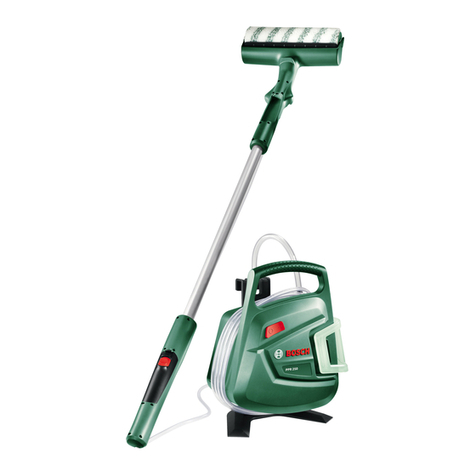
Bosch
Bosch PPR 250 User manual

Bosch
Bosch PFS 3000-2 User manual

Bosch
Bosch PFS 3000-2 User manual

Bosch
Bosch PFS 105 E User manual

Bosch
Bosch PFS 65 User manual

Bosch
Bosch 0603207200 User manual

Bosch
Bosch PSP 260 User manual

Bosch
Bosch PFS 3000-2 User manual

Bosch
Bosch PFS 105 E WALLPaint User manual

Bosch
Bosch 0603206200 User manual
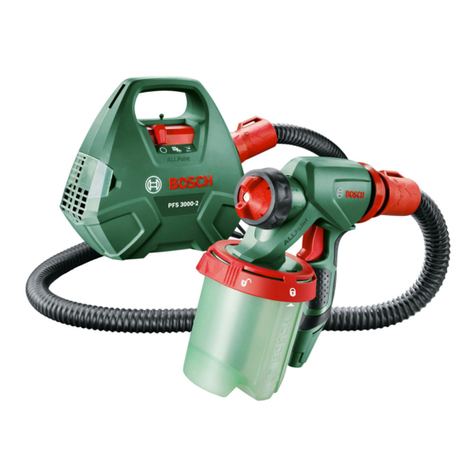
Bosch
Bosch PFS 3000-2 User manual
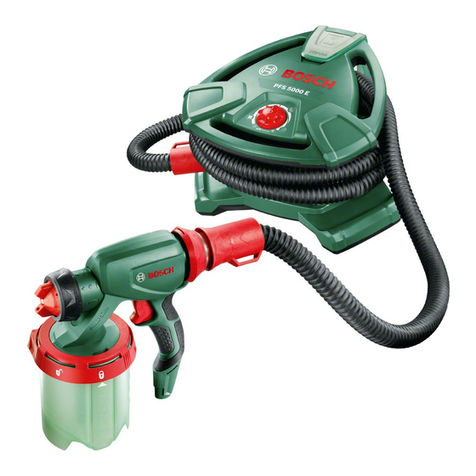
Bosch
Bosch PFS 5000E User manual

Bosch
Bosch PFS 5000E User manual

Bosch
Bosch PFS 55 User manual

Bosch
Bosch PFS 55 User manual

